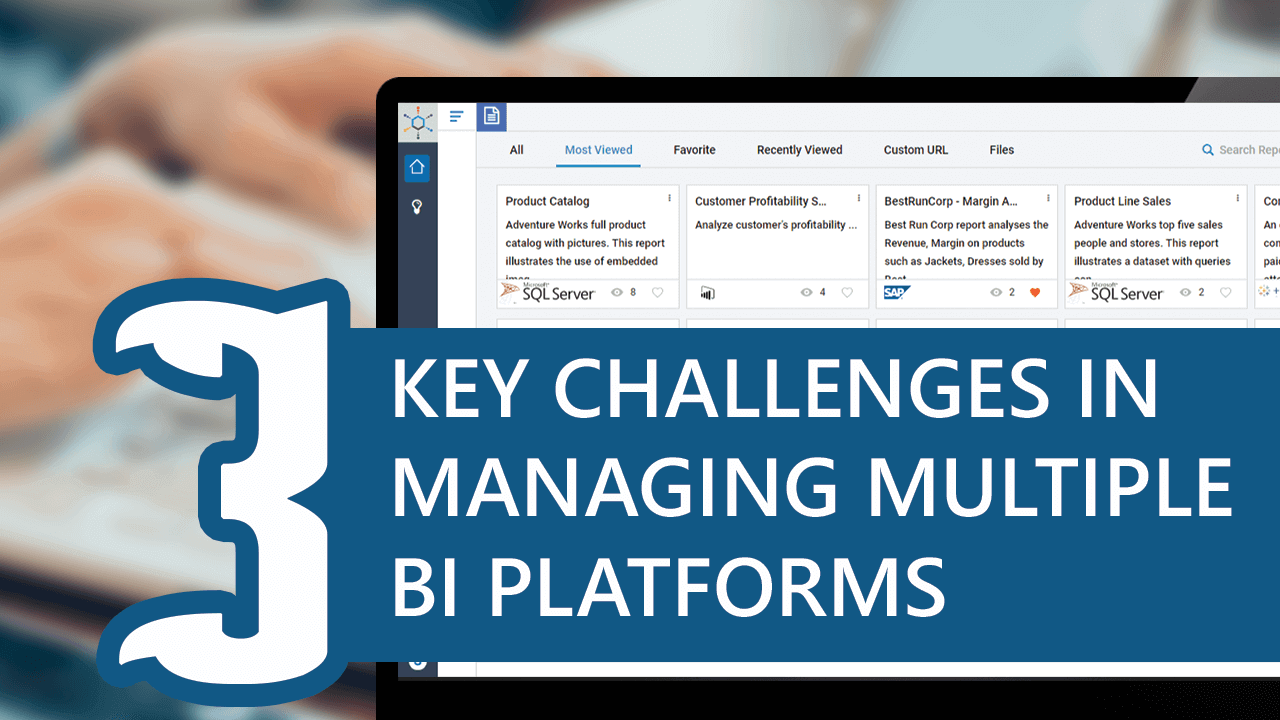The BI world is undergoing a turbo transition from legacy BI Platforms to modern BI platforms. The underlying reason for this transition is that the modern BI tools are more flexible and agile compared to the legacy platforms. Another huge transition that we could see is the change in the personas. Traditional BI tools were predominantly used by analysts and IT staff providing sophisticated features, which were not accessible by anyone outside this tech-savvy community. Whereas modern BI tools are meticulously breaking the barrier and aiding the BI adoption much easier and effortless as it has been more self-service oriented recently, therefore many different types of employees now use these BI tools, from business analysts to casual users.
Many enterprises are embarking on this journey of transition where they standstill between multiple BI platforms and find it difficult to cope up with this transition.
Do you feel yourself as a kid in a store starring at multiple chocolate boxes, difficult to choose which, when you have piled-up reports and dashboards in front of you? Don’t worry!! You are not alone! Numerous BI users experience this scenario of which BI report to choose from when they have multiple reports from multiple BI platforms. That is where the BI portals come into play!
BI Portals helps to integrate all the BI reports and dashboards from both legacy BI tools and Modern BI tools in one single interface. We know bridging the gap is no less complicated but there are actions you can take to make the consolidation relatively painless.

Choose a Hybrid BI Platform Model
As most of the BI spends are now splurged to cloud solutions there are still businesses that are not able to move their entire operations to a cloud-only model. In such a scenario a hybrid BI platform model can help. A BI Portal can help organizations best fit their needs. Know more about the cloud readiness feature from BI Hub.
Scenario: ABC company has Legacy SAP Crystal reports and is now into Power BI. With BI Hub they can consume all their reports from a single portal and when the Crystal report is completely replaced by a Power BI report, all they have to do is remove the Crystal report and add the Power BI report and users don’t have to go look for the new report anywhere else.
Provide centralized accessibility to BI Reports
When BI reports get piled up from different BI Platforms it’s really hard to figure out which report to trust and which not to. By providing a single point of entry and by centralizing all BI reports and dashboards into one single portal, it helps us to increase BI report adoption seamlessly. This in turn also helps us to remove duplicate BI reports that get created when these reports are decentralized. Know more about the Easy access feature from BI Hub.
Build a BI environment adhering to Report Governance
One of the key challenges while working in multiple BI systems is to coordinate between different stakeholders’ needs for self-service and to encourage better data stewardship practices. As the number of BI platforms and tools increases, the risks of report inaccuracy, duplication, inefficiency, and proliferation also become apparent. The best way to maintain a multi-platform environment with centralized governance is to use a BI Portal that incorporates all the company’s BI tools making them manageable and accessible from anywhere in the company. Know how BI Hub can help your organization and get guidance in planning your cloud readiness from our BI experts.
Reach out to us if you are seeking guidance on how to bridge the gap between a legacy BI platform and a modern BI platform.


